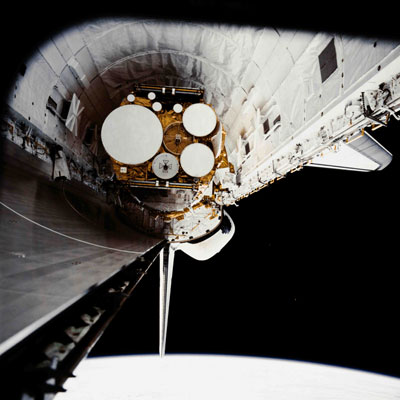A lighter shade of black: the (non) mystery of STS-51Jby Dwayne Day
|
| Launch Day | Shuttle | Mission | Payload |
|---|---|---|---|
| 24 January 1985 | Discovery | STS-51C | Magnum/Orion sigint satellite |
| 3 October 1985 | Atlantis | STS-51J | DSCS-III communications satellite |
| 2 December 1988 | Atlantis | STS-27 | Lacrosse radar satellite |
| 8 August 1989 | Columbia | STS-28 | SDS-II communications satellite |
| 22 November 1989 | Discovery | STS-33 | Magnum/Orion sigint satellite |
| 28 February 1990 | Atlantis | STS-36 | MISTY stealth reconnaissance satellite |
| 15 November 1990 | Atlantis | STS-38 | SDS-II/PROWLER comsat/inspection satellite |
| 28 April 1991 | Discovery | STS-39 | DoD experiments (unclassified mission) |
| 24 November 1991 | Atlantis | STS-44 | DSP missile warning satellite (unclassified mission) |
| 2 December 1992 | Discovery | STS-53 | SDS-II communications satellite |
Of the eight classified shuttle missions, only one of them has been substantially declassified. This was STS-51J, the launch of Atlantis on October 3, 1985, on a four-day mission to deploy two military communications satellites. The crew consisted of the commander, Air Force Colonel Karol J. Bobko, pilot Lieutenant Colonel Ronald J. Grabe, mission specialists Marine Corps Major David C. Hilmers and Army Colonel Robert L. Stewart, and payload specialist Air Force Major William D. Pailes.
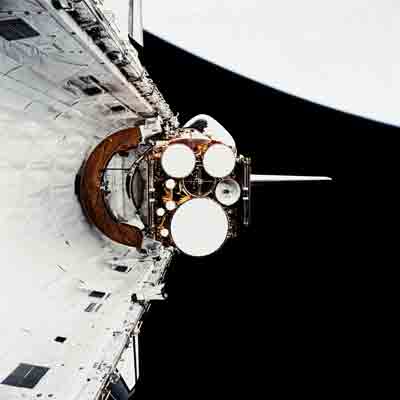 |
Although the Air Force had adopted a blanket classification policy towards military shuttle missions, the identity of the STS-51J was an open secret. For example, on October 7, 1985 Aviation Week & Space Technology reported that the shuttle was carrying two Defense Support Communications System III comsats. According to the magazine, the Air Force had announced in 1981 that it intended to launch a pair of DSCS-III comsats aboard a mid-1985 shuttle flight. Other major news publications repeated the claim that Atlantis carried communications satellites.
Soon after Atlantis landed, the story of the mission was essentially closed. Three and a half months later the Challenger came apart in a cold Florida sky and profoundly altered the American space program. The Air Force and the National Reconnaissance Office decided to abandon future plans to use the shuttle for putting payloads in orbit, although they had a backlog of half a dozen payloads that could only be carried aboard the shuttle and were among the first in line when the shuttle resumed flying in late 1988. STS-51J became a minor footnote even in the sparse history of the military use of the shuttle.
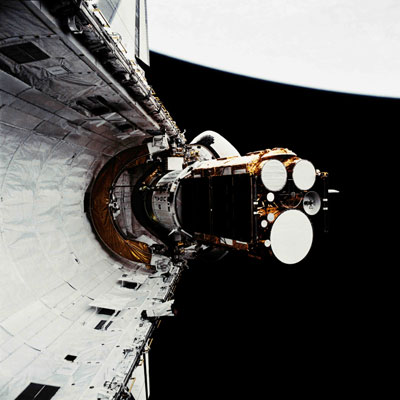 |
In the years after the mission, the Air Force gradually, grudgingly, acknowledged that it had launched the DSCS-III comsats aboard the shuttle. First the Air Force stated that it had launched two of the communications satellites in 1985 and the only launch that year that fit was the Atlantis mission. Eventually, several unclassified and declassified Air Force history documents admitted that DSCS-III satellites had been launched during a shuttle mission, but never stated which mission that was. Military secrecy can be bizarre at times, like acknowledging that there is a sky, and that the sky can be blue, but never saying that the sky is blue.
It was not until 1998 that the Air Force took a major step forward, after being pushed a bit. In July of that year, Spaceflight magazine published the first photographs of a payload launched from a classified shuttle flight—two photos of the dual DSCS-III comsats being deployed from Atlantis’ payload bay atop their Inertial Upper Stage. The photos were released by the Air Force in response to a Freedom of Information Act request. The photographs, which were exclusive to Spaceflight, later showed up in several other publications, including history books of the shuttle program.
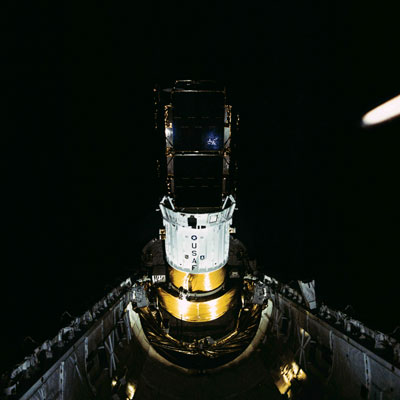 |
Recently, nearly 25 years after Atlantis roared off her launch pad with the two comsats tucked in her payload bay, several more photographs of the DSCS-III deployment have emerged. They are sharp and crisp, providing a good view of the two comsats stacked atop their Inertial Upper Stage, way in the back of the payload bay.
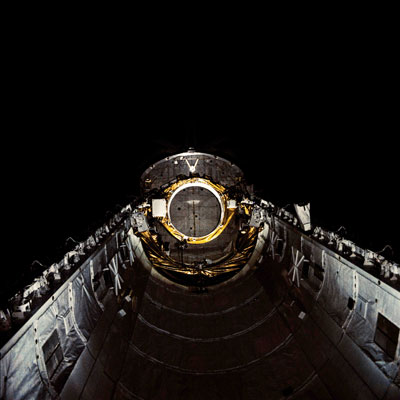 |
A total of 14 DSCS-III satellites were launched between 1982 and 2003. According to the Air Force, by May 2008 the majority of the satellites were still operational. Considering that they were designed with 10-year lifetimes, it seems unlikely that satellites launched in the 1980s remain operational. The DSCS-III satellites are being supplemented by the Wideband Global Satcom (WGS) satellites, which have far greater capabilities than their now-ancient predecessors.
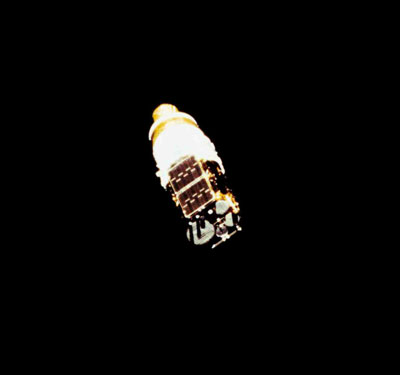 |
Although the STS-51J flight is no longer a mystery, if the suspected identities of the other classified shuttle flights are correct, then they are all intelligence satellites. Considering the secrecy that remains about American intelligence satellites, it seems likely that these other flights will continue to remain secret for a long time to come, and STS-51J will continue for many more years as the only declassified shuttle mission.
